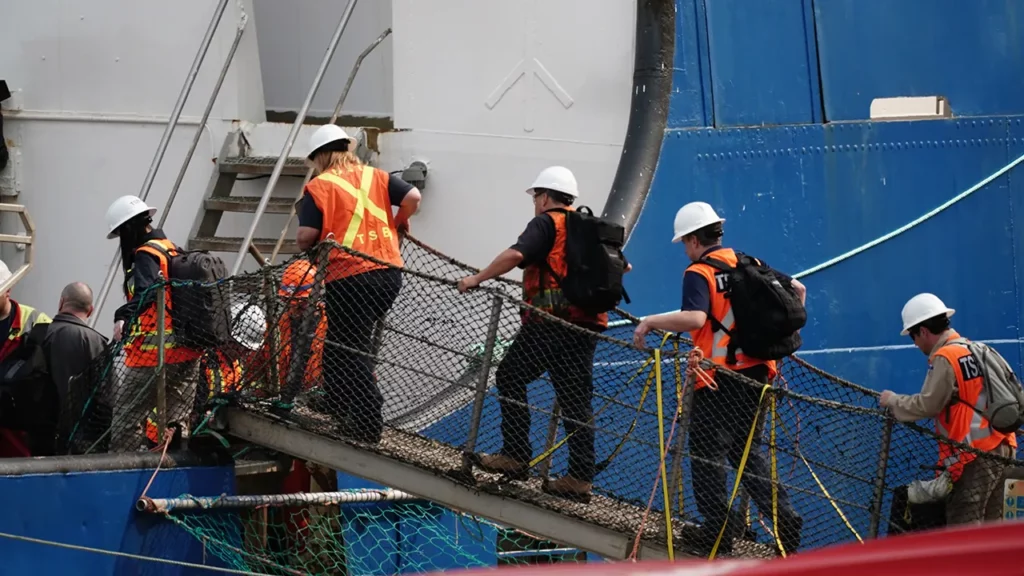OceanGate CEO and pilot Stockton Rush was one of the five, along with two members of a renowned Pakistani family—Shazada Dawood and his son Suleman—a British explorer named Hamish Harding, and a French Titanic expert named Paul-Henri Nargeolet. All five were French.

The Titan was a submarine that exploded while on a mission to the Titanic earlier this month. On Wednesday (June 28), the United States Coast Guard stated that what are believed to be human remains have been recovered from within the wreckage of the Titan. “The evidence that was recovered from the north Atlantic will be transported by the Coast Guard to a US port where medical professionals will conduct a formal analysis of the remains,” officials added.
“The evidence will provide investigators from several international jurisdictions with critical insights into the cause of this tragedy,” Jason Neubauer, a chair captain with the Marine Board of Investigation, said in an interview with a news agency. There is still a significant amount of work to be done in order to get an understanding of the reasons that led to the tragic loss of the Titan and to assist in making certain that a tragedy of a similar nature does not occur again.
After an international search and rescue operation, the authorities only about a week ago revealed that they had found the wreckage of the craft that went missing while attempting to dive to the Titanic wreck two miles below the surface. This latest development comes as a result of that search and rescue operation.
The Coast Guard had stated the previous week that a “catastrophic implosion” was the most likely cause of death for all five members of the crew that were aboard the submersible.
A number of fragments of the sunken ship washed up on the coast of Newfoundland, Canada, early on Wednesday morning. This evidence, according to the officials, will help in the investigation of the accident and provide information on the experimental design, safety regulations, and the vessel’s lack of certification.
Large chunks of metal that resembled portions of the white hull and landing skids of the Titan, which were built for touching down on the seabed, were brought to St. John’s by a Canadian ship called the Horizon Arctic. These pieces of metal were large.
Wreckage was retrieved from the submersible that was launched from a ship on June 18 and lost touch with the surface one hour and 45 minutes later. The wreckage included twisted wires and other things that were likely involved in the mechanics of the submersible. The submersible was 22 feet (6.7 metres) in length.
Recovering the wreckage is an essential part of the investigation into figuring out what went wrong with the operation. Long before now, professionals in the industry have cast doubt on the design of the vessel, and they have questioned the safety record of OceanGate, the United States business that operated the submersible.
Before the wreckage of the vessel was discovered on the ocean below, the entire world anxiously awaited any word regarding the location of the vessel. Millions of people around the world watched as the media attempted to determine whether or not the missing submarine would be located before its oxygen supply ran out.
Horizon Arctic conducted a search for fragments of the submersible that had been lost on the ocean floor close to where the Titanic had sunk using a remotely operated vehicle (ROV). Pelagic Research Services, the business that owns the remotely operated vehicle (ROV), announced in a statement that it had finished its work offshore on Wednesday. Pelagic Research Services has offices in both Massachusetts and New York.